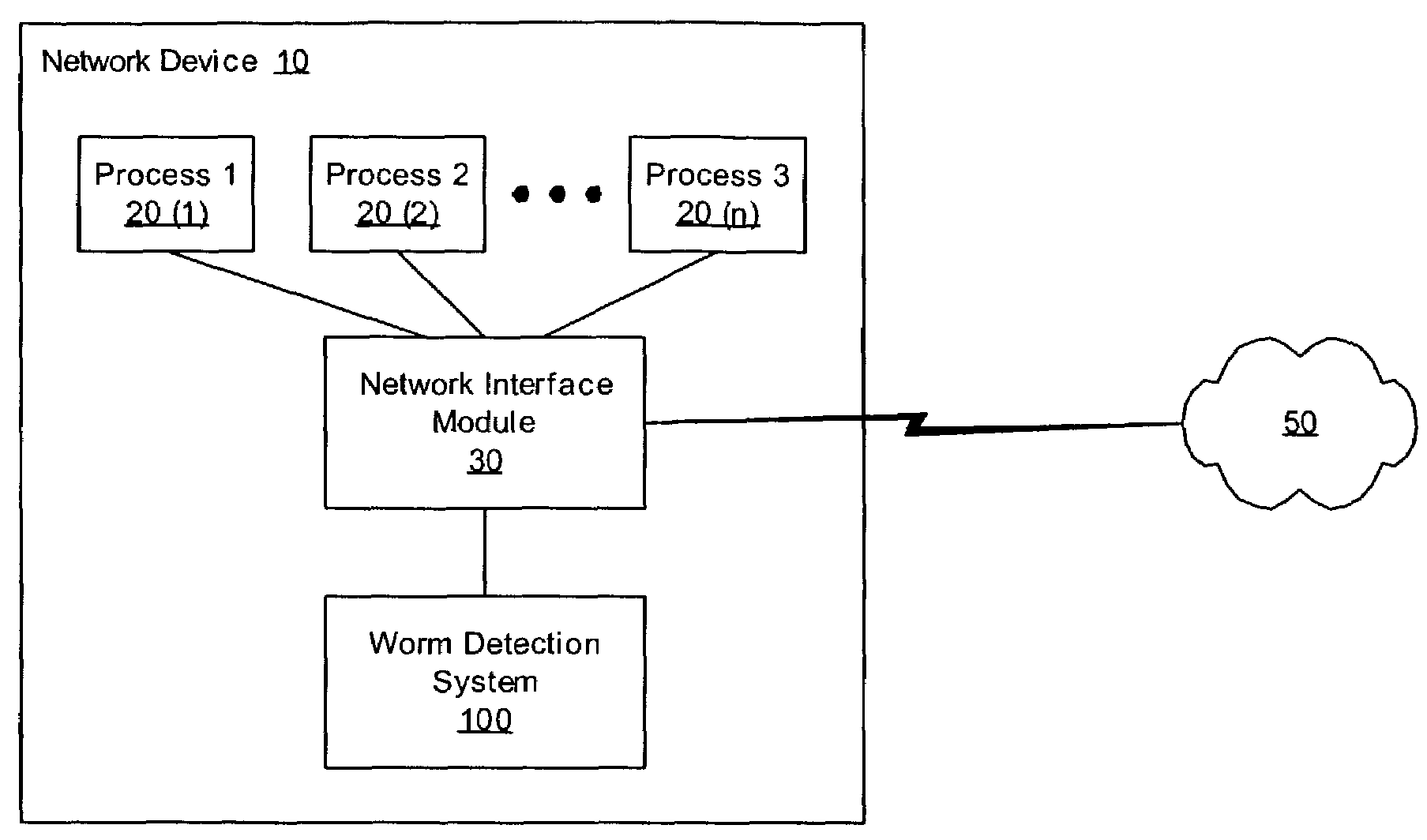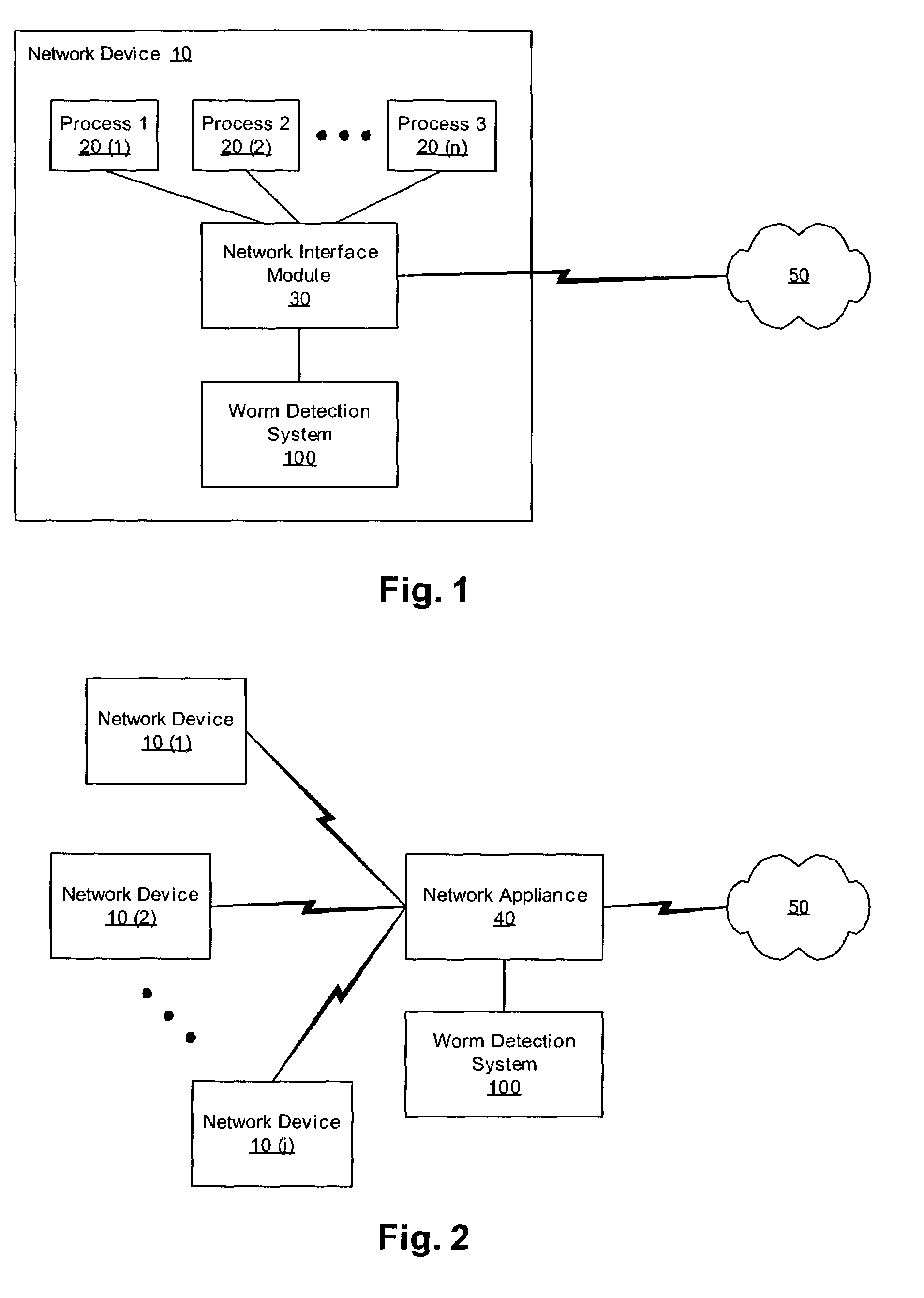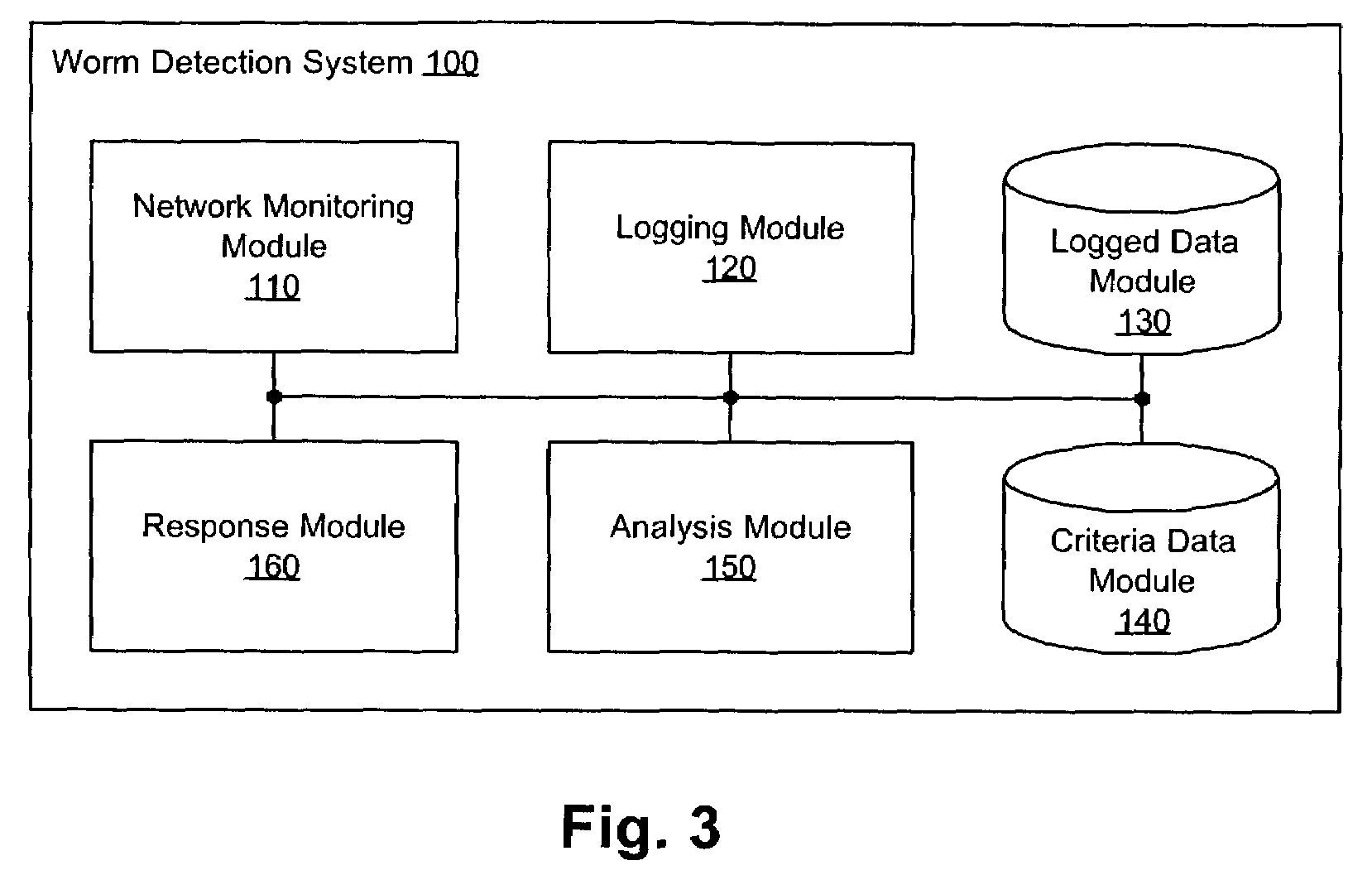Heuristic detection and termination of fast spreading network worm attacks
a network worm and worm technology, applied in the field of computer worm attacks, can solve the problems of worms that have a relatively high rate of connection attempts, malicious code of computer worms, and potential more dangerous worms
- Summary
- Abstract
- Description
- Claims
- Application Information
AI Technical Summary
Benefits of technology
Problems solved by technology
Method used
Image
Examples
Embodiment Construction
[0013]Computer worms typically generate a relatively high number of failed network connection attempts as they attempt to infect other computer systems over a network. Embodiments of the present invention provide a heuristic to detect these computer worms by monitoring network connection attempts and noting any abnormal activity. Once a worm attack is detected, the attack can be addressed by alerting a user or system administrator to the worm, or by terminating the offending entity or denying its access to the network. These functions are carried out by a worm detection system (WDS) 100.
[0014]FIG. 1 is a diagram of a “host-based” embodiment of the present invention in which a WDS 100 runs as a software program on a network device 10. In one embodiment, the network device 10 is a computer system; however, the WDS 100 can be used to protect any of a variety of other types of network devices that are susceptible to worm attacks. Therefore, as used herein, the definition of “network dev...
PUM
 Login to View More
Login to View More Abstract
Description
Claims
Application Information
 Login to View More
Login to View More - R&D
- Intellectual Property
- Life Sciences
- Materials
- Tech Scout
- Unparalleled Data Quality
- Higher Quality Content
- 60% Fewer Hallucinations
Browse by: Latest US Patents, China's latest patents, Technical Efficacy Thesaurus, Application Domain, Technology Topic, Popular Technical Reports.
© 2025 PatSnap. All rights reserved.Legal|Privacy policy|Modern Slavery Act Transparency Statement|Sitemap|About US| Contact US: help@patsnap.com



